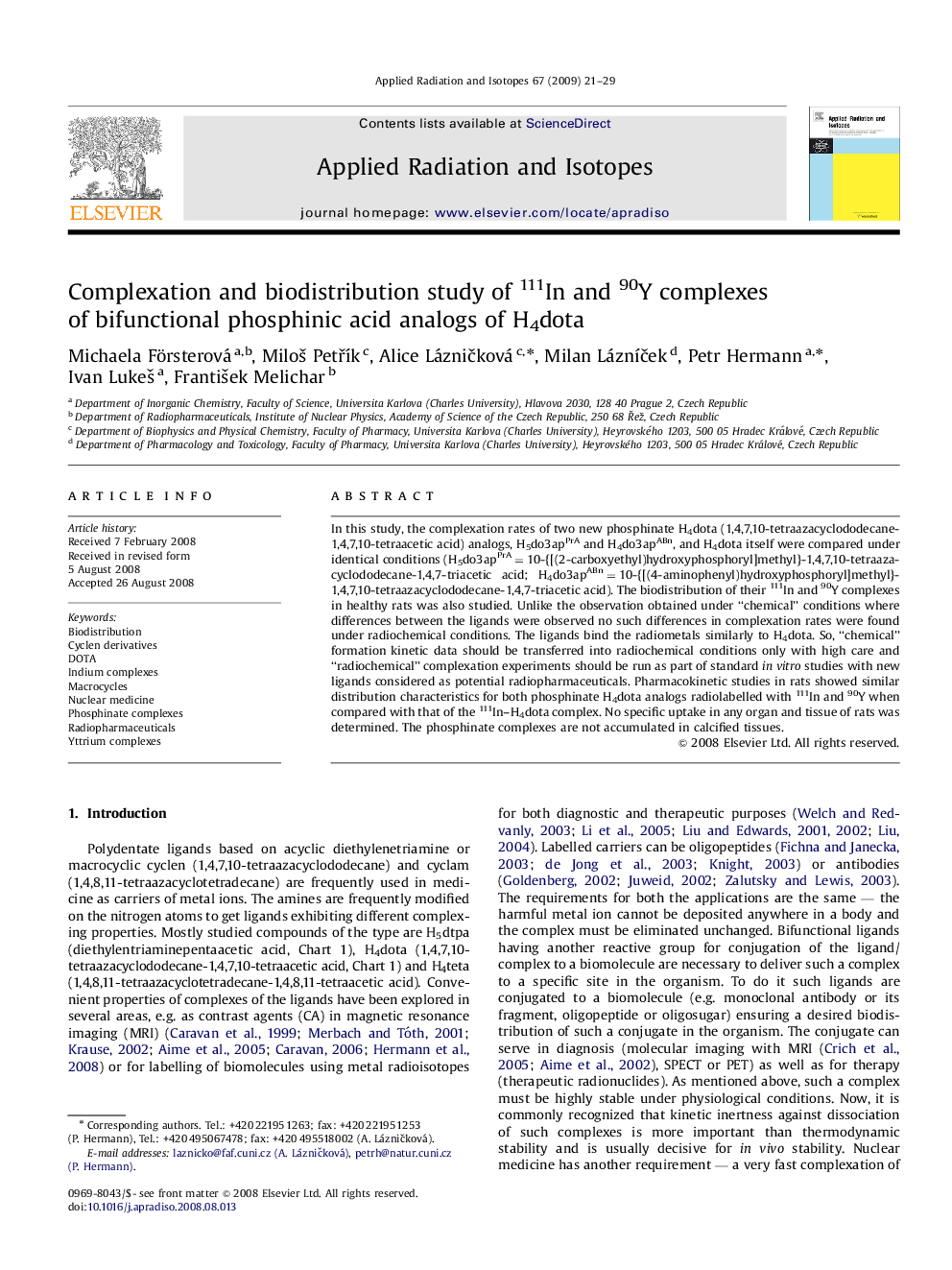| Article ID | Journal | Published Year | Pages | File Type |
|---|---|---|---|---|
| 1876784 | Applied Radiation and Isotopes | 2009 | 9 Pages |
Abstract
In this study, the complexation rates of two new phosphinate H4dota (1,4,7,10-tetraazacyclododecane-1,4,7,10-tetraacetic acid) analogs, H5do3apPrA and H4do3apABn, and H4dota itself were compared under identical conditions (H5do3apPrA=10-{[(2-carboxyethyl)hydroxyphosphoryl]methyl}-1,4,7,10-tetraazacyclododecane-1,4,7-triacetic acid; H4do3apABn=10-{[(4-aminophenyl)hydroxyphosphoryl]methyl}-1,4,7,10-tetraazacyclododecane-1,4,7-triacetic acid). The biodistribution of their 111In and 90Y complexes in healthy rats was also studied. Unlike the observation obtained under “chemical” conditions where differences between the ligands were observed no such differences in complexation rates were found under radiochemical conditions. The ligands bind the radiometals similarly to H4dota. So, “chemical” formation kinetic data should be transferred into radiochemical conditions only with high care and “radiochemical” complexation experiments should be run as part of standard in vitro studies with new ligands considered as potential radiopharmaceuticals. Pharmacokinetic studies in rats showed similar distribution characteristics for both phosphinate H4dota analogs radiolabelled with 111In and 90Y when compared with that of the 111In-H4dota complex. No specific uptake in any organ and tissue of rats was determined. The phosphinate complexes are not accumulated in calcified tissues.
Keywords
Related Topics
Physical Sciences and Engineering
Physics and Astronomy
Radiation
Authors
Michaela Försterová, MiloÅ¡ PetÅÃk, Alice LázniÄková, Milan LáznÃÄek, Petr Hermann, Ivan LukeÅ¡, FrantiÅ¡ek Melichar,
